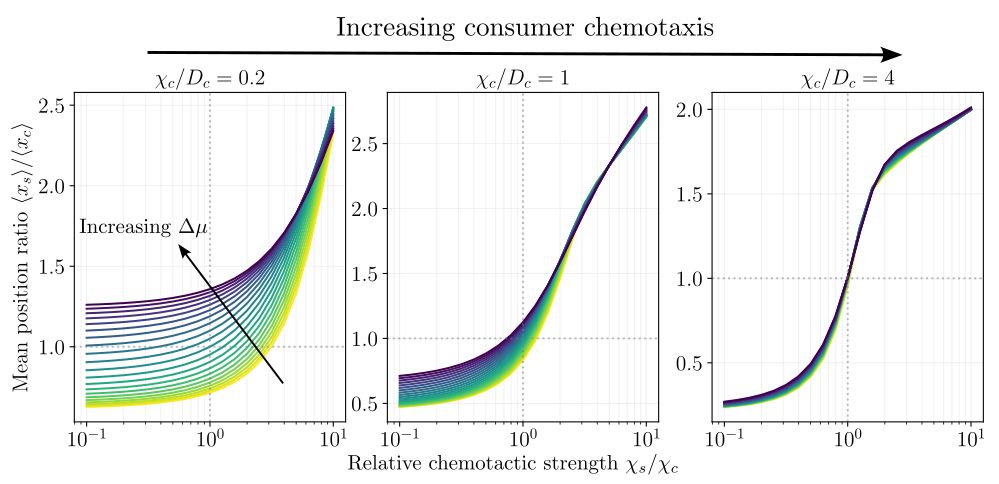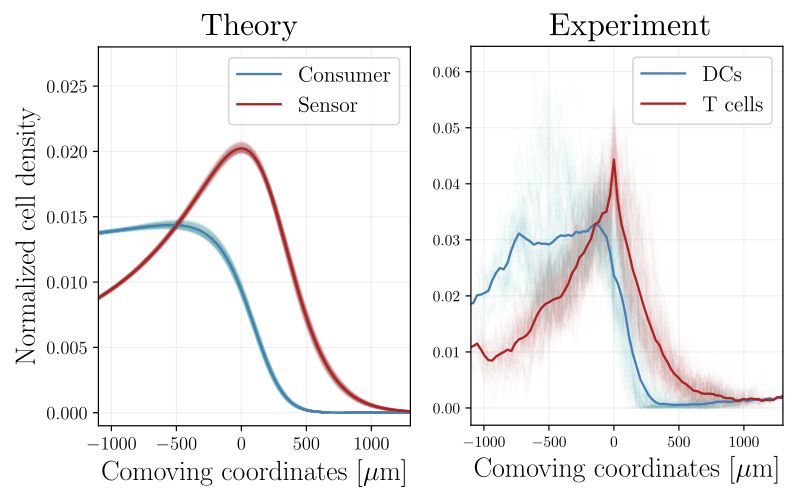
https://www.sheffield.ac.uk/mps/people/all-academic-staff/mehmet-can-ucar






👉 shorturl.at/kfH4I
👉 shorturl.at/kfH4I


T cells (sensors) showed a concentration peak ahead of DCs (consumers), despite being unable to migrate alone -purely driven by DC-generated gradients!

T cells (sensors) showed a concentration peak ahead of DCs (consumers), despite being unable to migrate alone -purely driven by DC-generated gradients!
🔹DCs (consumers) and T cells (sensors) migrated as coupled travelling waves 🌊
🔹T cells stayed at a conserved distance ahead of DCs!

🔹DCs (consumers) and T cells (sensors) migrated as coupled travelling waves 🌊
🔹T cells stayed at a conserved distance ahead of DCs!
Dendritic cells (DCs), which shape the gradient, and T cells, acting as sensors, migrated in 1D channels, with cells continuously entering from a reservoir:

Dendritic cells (DCs), which shape the gradient, and T cells, acting as sensors, migrated in 1D channels, with cells continuously entering from a reservoir:
..but the sensor-consumer separation is bounded, as sensors will eventually reach the flat region of the attractant profile!

..but the sensor-consumer separation is bounded, as sensors will eventually reach the flat region of the attractant profile!
🔴If sensors aren’t chemotactic enough, they can’t follow the gradients generated by consumers and fall behind, leading to an uncoupled migration dynamics.

🔴If sensors aren’t chemotactic enough, they can’t follow the gradients generated by consumers and fall behind, leading to an uncoupled migration dynamics.
(i) Consumers: sensing & degrading chemoattractants,
(ii) Sensors: following gradients.

(i) Consumers: sensing & degrading chemoattractants,
(ii) Sensors: following gradients.
We develop a theory of self-generated chemotaxis in mixed populations -are there optimal principles for this cooperation?🤔
www.biorxiv.org/content/10.1...
We develop a theory of self-generated chemotaxis in mixed populations -are there optimal principles for this cooperation?🤔
www.biorxiv.org/content/10.1...

Feel free to reach out for more info (DM/email)!
Please repost / share 🙂

Feel free to reach out for more info (DM/email)!
Please repost / share 🙂

